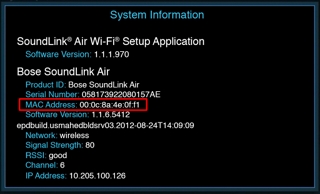

#CMD COMMAD FOR MAC ADDRESS WINDOWS#
The previously discussed NbtStat command can provide you with the host name that has been assigned to a Windows device, if you know which switch to use with the command. The NbtStat -r command shows how many NetBIOS names the device has been able to resolve recently. The NbtStat -n command for example, shows the NetBIOS names that are in use by a device. The NbtStat command can help you to diagnose and correct such problems. Of course, NetBIOS over TCP/IP can occasionally break down. Windows uses several different methods to map NetBIOS names to IP addresses, such as broadcast, LMHost lookup, or even using the nearly extinct method of querying a WINS server. The computer name is sometimes referred to as the NetBIOS name. Oftentimes, there is a domain name or a workgroup name that is also assigned to the computer. If you are having problems communicating with one specific host, you can append the remote host’s IP address to the ARP -A command.Īs I am sure you probably know, computers that are running a Windows operating system are assigned a computer name. You can see the contents of this cache by using the ARP -A command. Windows devices maintain an ARP cache, which contains the results of recent ARP queries. Its job is to map IP addresses to MAC addresses. This is where the Address Resolution Protocol comes into play. Although it is easy to think of network communications in terms of IP addressing, packet delivery is ultimately dependent on the Media Access Control (MAC) address of the device’s network adapter. The ARP command corresponds to the Address Resolution Protocol. To see this type of summary information, just type NetStat -e.

This command has a number of different functions, but the most useful of these is to display network summary information for the device. That’s where the aptly named NetStat command comes into play. If you are experiencing problems with network communications, then network statistics can sometimes help point you toward the root cause of the problem. Receiving these packets confirms that a valid and functional network path exists between the two hosts. Assuming that there are no network problems or firewalls preventing the ping from completing, the remote host will respond to the ping with four packets. Simply enter the Ping command, followed by the name or the IP address of the destination host. Ping is used to test the ability of one network host to communicate with another. I am guessing that the ping command is probably the most familiar, and most widely used of the utilities being discussed in this article, but that does not make it any less essential. However, there are 11 built-in networking tools that Windows networking administrators should be familiar with. These tools range from the obscure to the commonplace. The Windows operating system contains numerous built-in, command line networking utilities.


 0 kommentar(er)
0 kommentar(er)
